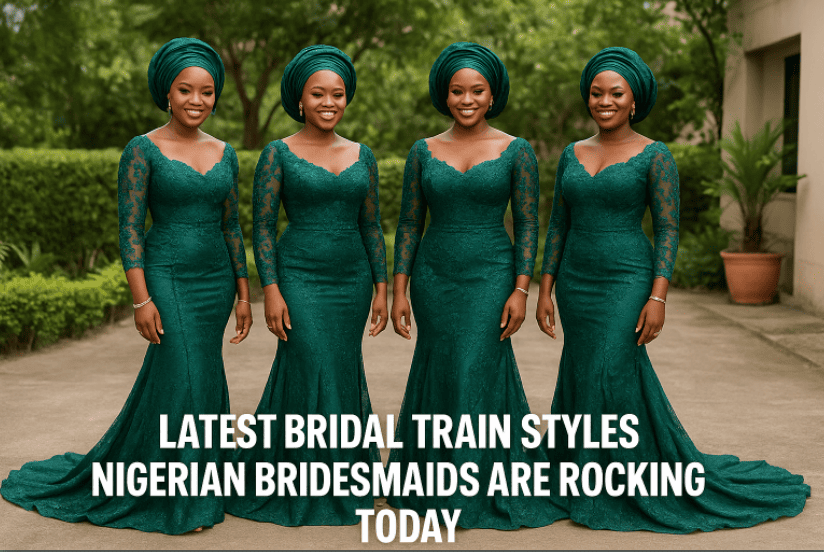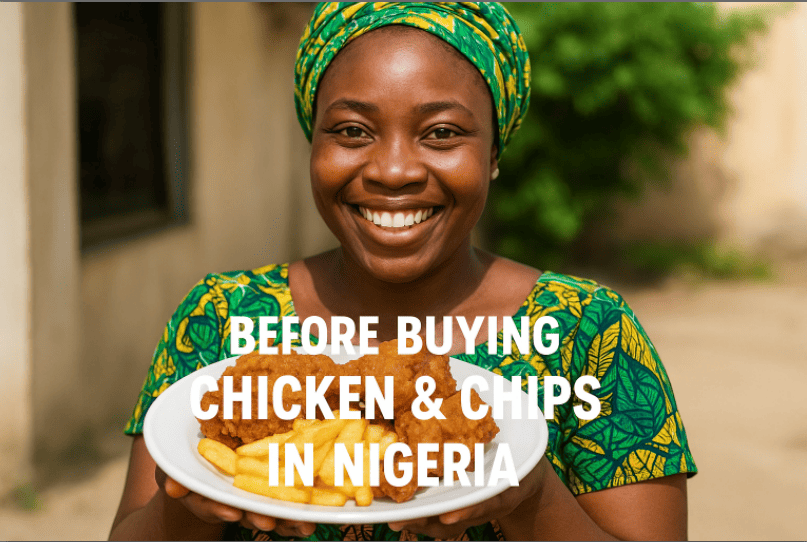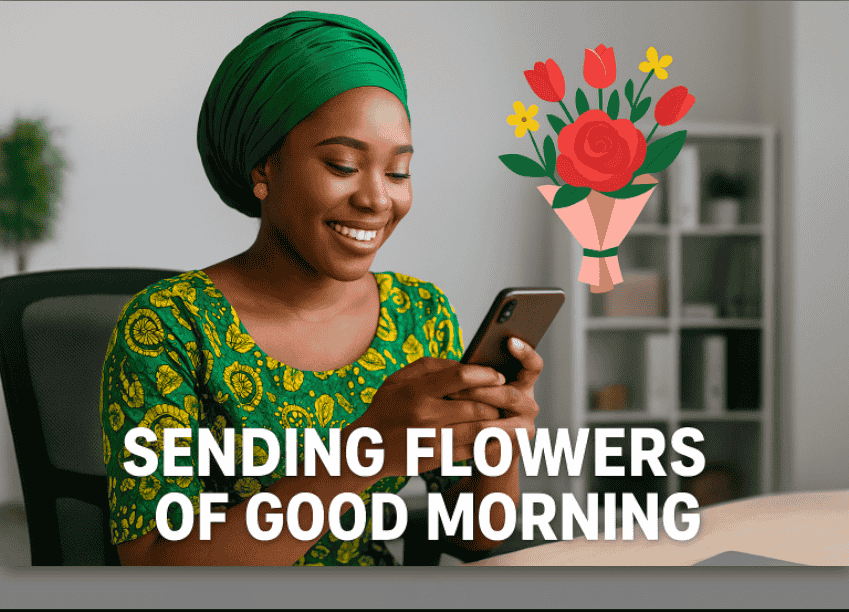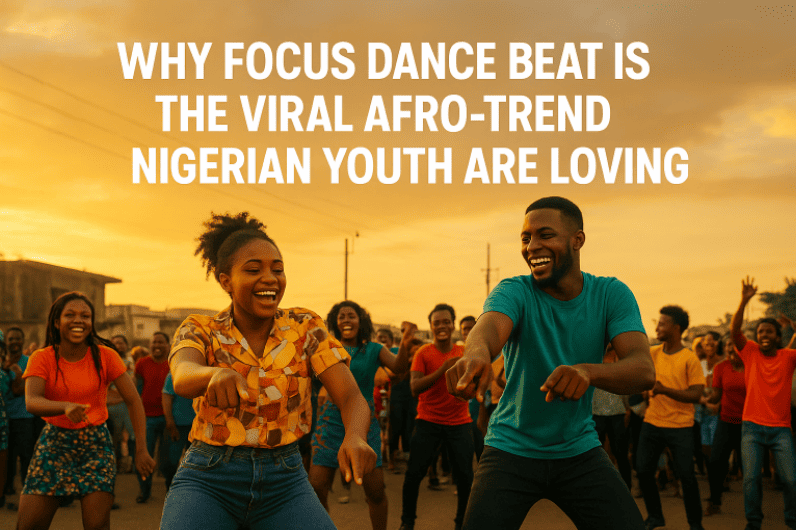Imagine it is Saturday morning in Lagos, the sun is blazing, and your entire neighborhood is buzzing with excitement as cars honk, music blares, and guests flood into a wedding venue adorned with glittering decorations. Right in the middle of it all, eyes are fixed—not just on the bride—but on the bridal train styles, those stunningly dressed bridesmaids whose styles often set the fashion tone for the entire event. In Nigeria today, a bride’s bridal train is not just a support system; it’s a fashion statement.
But here’s the problem—many Nigerian brides are stuck between outdated fashions, high tailoring costs, or last-minute decisions that leave the bridal train looking disjointed. So how do you, as a bride or bridesmaid, choose the perfect bridal train styles that wow your guests, stay on budget, and align with the latest trends?
This article provides a full guide to help you make informed decisions on modern, elegant, and trendy bridal train styles suitable for Nigerian weddings. From traditional to contemporary styles, we’ll explore what’s hot, what works for your theme, and how to customize your bridal train for that unforgettable wedding.
Confused about the difference between a marriage certificate and a marriage license in Nigeria? This guide explains both documents, their legal roles, and when you need each one to ensure your union is properly recognized and protected under Nigerian law.
Understanding Bridal Train and Its Components
In the world of weddings—especially Nigerian weddings—the bridal train is more than just a group of women standing beside the bride. It’s a powerful display of love, support, culture, and style.
What is a Bridal Train?
A bridal train refers to the organized group of female companions (usually close friends, sisters, cousins, or colleagues) chosen by the bride to support and accompany her throughout her wedding journey. These ladies are dressed in coordinated outfits and often walk down the aisle before or beside the bride.
In Nigerian society, the bridal train is both a status symbol and a fashion statement.
Key Components of a Bridal Train:
1. Chief Bridesmaid (or Maid of Honor)
• She’s the bride’s right-hand woman.
• Handles the bride’s dress, bouquet, touch-ups, and emotional support.
• Often the most trusted friend or closest sibling.
2. Bridesmaids
• Usually between 4 to 10 ladies (sometimes more).
• Chosen based on closeness to the bride or relationship.
• Dress in matching or coordinated outfits.
• Participate in pre-wedding events like bridal showers, rehearsals, and fittings.
3. Bridesmaid Dress Code (aka Bridal Train Styles)
• Styles reflect the wedding theme, culture, and current trends.
• Popular Nigerian styles include:
• Ankara and lace fusion gowns
• Mermaid gowns with dramatic sleeves
• Corset-inspired dresses
• One-shoulder satin or chiffon gowns
• Dresses may be identical or in the same fabric with slight style variations.
4. Accessories & Hairstyles
• Coordinated jewelry, purses, and shoes
• Popular hairstyles: Sleek buns, beaded braids, braided updos
• Gele or turbans may be added for traditional weddings
5. Asoebi or Fabric Contribution
• Sometimes, the bride buys the fabric, and bridesmaids pay for tailoring.
• In other cases, everyone contributes towards both fabric and sewing.
6. Roles & Responsibilities
• Help organize bridal shower
• Assist the bride with getting dressed
• Walk in during the bridal procession
• Cheer during the wedding reception
• Support the bride emotionally and practically throughout
Why Bridal Train Styles Matter in Nigerian Weddings
In Nigeria, weddings are more than ceremonies—they are cultural festivals. A wedding without a beautifully styled bridal train is considered incomplete. Nigerian bridesmaids are often viewed as extensions of the bride herself, and their appearance reflects the wedding’s status, taste, and class.
Here’s why styling the bridal train matters:
• Cultural Significance: Bridal train outfits often reflect the tribe, heritage, or background of the couple.
• Visual Appeal: A coordinated bridal train elevates the aesthetic of wedding photos.
• Social Status: In some Nigerian cultures, stylish bridesmaids indicate affluence.
• Branding: In the social media age, weddings go viral. Trendy bridal train styles are a bride’s best advertisement.
According to recent statistics from Wedding Digest Nigeria, over 70% of brides now budget 20% more for bridal train styling than they did five years ago—showing just how serious this aspect of wedding planning has become.
Top Modern Bridal Train Styles Nigerian Brides Love
As Nigerian fashion evolves, so do bridal train styles. Modern brides want a blend of glamour, functionality, and tradition. Below are trending styles Nigerian bridesmaids are currently rocking:
1. The Corset-Inspired Asoebi Gown
The corset-inspired Asoebi gown is redefining elegance in Nigerian weddings, seamlessly merging traditional culture with high-fashion flair. This trend has taken over 2024 bridal train aesthetics in cities like Lagos, Abuja, Port Harcourt, and even in destination weddings involving Nigerians abroad. Bridesmaids who rock this look often become instant showstoppers.
This style draws inspiration from Victorian-era corsets, which are reimagined using richly textured African fabrics such as lace, sequins, velvet, damask, and Ankara. These materials are structured into snatched waist bodices that highlight the feminine silhouette—delivering an hourglass shape that’s bold, classy, and unapologetically African.
Key Features:
• Tight-fitting bustier top – Designed to cinch the waist and enhance the curves. Most come with built-in boning and padding for structure and support, while still allowing flexibility and breathability for dancing and movement.
• Fish-tail or flared lower cut – From knee to ankle, the gown often fans out into a mermaid or flared design, creating drama and elegance as the bridesmaid walks. The fishtail effect adds sophistication and lends itself beautifully to sweeping entrances and photo moments.
• Mostly styled with gele or beaded hair accessories – The full glam experience includes bold gele headwraps in matching fabric or traditional beads intricately styled into hair, often paired with dramatic earrings and highlighter-rich makeup looks.
• Innovative sleeve designs – Off-shoulder, puffy sleeves, mono sleeves, or illusion net sleeves with appliqués are trending add-ons that elevate this look.
• Sheer panels or skin-tone mesh – Many corset gowns now feature illusion details that blend seamlessly with the wearer’s skin tone, adding a touch of sensuality without compromising modesty.
• Detailed embroidery and embellishments – Think pearls, rhinestones, sequins, and glittering threads—applied to the bustier and hemline for extra luxury and “rich aunty” energy.
• Perfect for all body types – With proper tailoring, the corset style flatters curvy and slim bridesmaids alike, enhancing posture and confidence.
2. The Flowy One-Shoulder Dress
When it comes to achieving effortless elegance and all-day comfort, the flowy one-shoulder dress remains a timeless favorite among Nigerian bridal train styles in 2024. This style has seen a resurgence at outdoor ceremonies in Port Harcourt, Lekki beach weddings, garden receptions in Ibadan, and even destination weddings in Ghana or Dubai.
Crafted with lightweight, fluid fabrics such as chiffon, satin, silk crepe, organza, or soft georgette, this gown design is known for its graceful drape and regal look. The asymmetric neckline of the one-shoulder design adds a touch of drama and sophistication without being over-the-top.
Key Benefits & Features:
• Elegant and breathable – Perfect for the hot and humid Nigerian climate, especially during dry-season weddings. The flowing material allows air circulation, making it comfortable for long hours of celebration, dancing, and photo sessions.
• Allows for coordinated but unique styles – One of the biggest advantages of this style is its flexibility in color combinations and custom tailoring. Many brides opt for mix-and-match tones (e.g., all shades of pink, green, or wine) or ombre palettes, where each bridesmaid wears a different shade of the same color family for a stylishly unified effect.
• Minimalist yet classy look – Ideal for brides who want an understated yet fashionable bridal train. When styled with statement earrings, bangles, or layered beads, the overall look becomes red-carpet worthy without overwhelming the bride’s shine.
• Fits all body types – The one-shoulder dress flatters both petite and plus-sized bridesmaids. Designers often incorporate built-in waistbands, flowy skirts, or ruched bodices to accentuate curves and provide a flattering silhouette for every shape.
• Ease of movement – Thanks to the free-flowing nature of the lower half, bridesmaids can move, dance, and sit comfortably—making it ideal for church-to-reception transitions and beach-side celebrations where mobility is a must.
• Versatile styling options – Can be styled with side-swept curls, beaded headbands, floral crowns, or minimalist gele, depending on the theme. Footwear can range from strappy heels to elegant flats or sandals, based on the wedding location.
• Budget-friendly option – This style is often more affordable to sew or buy compared to heavily structured gowns, yet still delivers a premium, chic appearance.
Whether you’re planning a romantic sunset wedding by the ocean or a morning garden-themed event, the flowy one-shoulder dress combines function, fashion, and femininity effortlessly.
3. Ankara Fusion Styles
Ankara Fusion Styles have become a vibrant expression of identity, elegance, and creativity in today’s Nigerian bridal trains. What used to be a fabric reserved mostly for casual or traditional settings is now being transformed into high-fashion bridesmaid gowns, especially among Yoruba and Igbo brides who want to make a cultural statement without sacrificing trend or style.
In 2024, many brides are proudly embracing this fusion to create custom looks that combine Ankara prints with modern tailoring techniques, resulting in bridal train outfits that are colorful, unique, and Instagram-worthy.
Highlights and Key Features:
• Mix with lace, velvet, organza, or mesh – The modern Ankara look is often fused with soft lace overlays, illusion mesh sleeves, velvet bodices, or dramatic tulle ruffles. This blend not only elevates the aesthetic but also creates a rich texture contrast that screams sophistication.
• Adds cultural flavor and bold expression – With Ankara’s vibrant patterns and colors, bridal trains instantly reflect the bride’s roots. Whether it’s a bold Kente-inspired motif or a softer pastel Ankara print, it brings life, pride, and ethnic identity to the entire event.
• Highly customizable – No two Ankara fusion dresses are the same. Tailors and designers work with each bridesmaid to create custom fits, sleeve styles, necklines, and skirt shapes. From mermaid cuts to A-line gowns, and from cold shoulders to dramatic puff sleeves, the style possibilities are endless.
• Budget-friendly for large bridal trains – For brides who want a unified look without breaking the bank, Ankara fusion is a smart choice. Ankara is widely available in Nigerian markets, and tailors can work magic with it even on a limited budget. This is especially helpful when catering to trains of 8 to 15 bridesmaids or more.
• Color coordination is easy – With countless Ankara designs available, brides can pick a pattern that matches the wedding theme while allowing slight variations in gown design per bridesmaid. This maintains uniformity with personal expression.
• Perfect for traditional and white weddings – Ankara fusion dresses can be styled for both the traditional engagement ceremony (Igba Nkwu, Yoruba Introduction, or Idoma marriage rites) and the church/white wedding reception, especially when paired with elegant heels and jewelry.
• Pairs beautifully with bold accessories – Think gele headwraps, beaded necklaces, clutch purses, and Aso-Oke sashes. The accessories further highlight the ethnic elegance of the outfit.
• Durable and reusable – One major advantage is that Ankara fusion gowns are not a one-time wear. They can be repurposed for future events, giving bridesmaids more value for their investment.
This style isn’t just a fashion choice—it’s a statement of cultural confidence, smart budgeting, and creative customization. It’s no surprise that more Nigerian brides in 2024 are turning to Ankara fusion for their bridal train goals.
Discover expert tips for selecting the ideal bungalow house plan tailored to Nigerian needs. Learn how to balance beauty, functionality, and budget while making smart design choices that suit your land, lifestyle, and family size.
4. Mermaid Gowns with Dramatic Sleeves
When elegance meets drama, Mermaid Gowns with Dramatic Sleeves become the ultimate bridal train showstoppers—especially in Christian weddings across the South-South region like Uyo, Calabar, Benin, and Asaba. These gowns are structured to hug the curves, flare out at the knees, and command attention with sleeves that are nothing short of stunning.
In 2024, this style has gained massive popularity for its ability to combine sensuality, structure, and statement fashion all in one outfit. It’s perfect for bridesmaids who want to slay modestly yet boldly, ensuring they look like royalty next to the bride.
Key Features & Style Tips:
• Statement sleeves are the centerpiece – From balloon sleeves that float regally around the arm, to puff sleeves that add volume and flair, or off-shoulder styles that exude timeless romance, the sleeves are where all the drama happens. Some designers even incorporate detachable sleeves for versatility.
• Perfect for fitted silhouettes – The mermaid cut is tailored to emphasize the waist, hips, and thighs, flaring out at the bottom to create that signature hourglass silhouette. It’s especially flattering on curvier body types and makes bridesmaids look statuesque and glamorous.
• Match sleeves with earrings or hair accessories – Dramatic sleeves pair beautifully with statement earrings, such as chandelier or drop styles. If the sleeves are puffed or off-shoulder, avoid neckpieces and focus on bold earrings and a sleek bun or side-swept curls for balance.
• Use shimmer or metallic fabrics for nighttime ceremonies – For evening receptions or nighttime church weddings, go for fabrics like shimmer tulle, glitter-infused lace, sequin-stretch material, silk satin, or lurex. These catch the light beautifully and elevate the look to full-on red-carpet glam.
• Tailor to fit each body shape – A well-fitted mermaid gown is non-negotiable. Proper tailoring ensures that the gown hugs in the right places and flares out gracefully, without restricting movement. Most South-South brides work closely with experienced local designers to achieve the perfect fit for each bridesmaid.
• Best styled with classic makeup and glam hair – Think matte or glossy lips, well-defined brows, highlighted cheekbones, and neatly packed hairdos like low buns, curly updos, or bone-straight center parts. The idea is to complement the drama of the dress with soft-glam elegance.
• Photogenic appeal – These gowns photograph beautifully, especially with proper lighting. The flare, sleeves, and structure provide eye-catching silhouettes in both motion and still shots—making them a favorite for Instagram wedding recaps.
This style delivers both structure and softness, perfect for Nigerian bridesmaids who want to leave a lasting impression while still honoring cultural modesty and church dress codes.
How to Choose Bridal Train Styles That Match Your Wedding Theme
Choosing the right bridal train style is more than just picking pretty dresses—it’s about aligning your bridal team’s look with your overall wedding theme, location, and cultural background. Whether you’re planning a traditional, modern, luxurious, or destination wedding, harmony in your bridal train’s appearance adds a powerful visual effect to your big day and your photos.
1. Consider Your Venue
Your wedding venue greatly influences the style, fabric, and fit of your bridesmaids’ dresses. The wrong combination can lead to discomfort, fashion clashes, or a completely off-theme look.
• Indoor Weddings (Hotel Hall or Church):
Indoor venues—like luxury hotel ballrooms, church auditoriums, or event centers—tend to call for formal, structured, and elegant gowns. These settings are perfect for gowns made with sequins, velvet, satin, or silk, which exude opulence and look striking under artificial lighting.
Example: A rich velvet mermaid gown with crystal embellishments and a matching gele would look stunning at a white wedding held in a Lagos cathedral or Abuja hotel hall.
Style Tip: For indoor weddings, go bold with darker or jewel-toned fabrics like emerald, plum, or deep blue—they catch light well and enhance the richness of indoor photos.
• Outdoor Weddings (Garden or Beach):
Outdoor weddings are often more relaxed, breezy, and romantic, requiring lightweight, breathable fabrics like chiffon, organza, georgette, or soft satin. These materials offer graceful movement and prevent overheating in the Nigerian sun.
Example: Flowy one-shoulder chiffon gowns in blush pink or sage green for a garden wedding in Port Harcourt or a beach wedding in Tarkwa Bay.
Style Tip: Avoid heavy embroidery or stiff fabrics for outdoor venues—opt for soft silhouettes, minimal beading, and airy designs that allow for comfort and elegance in humid weather.
2. Factor in Colors and Culture
Color is not just an aesthetic choice—it often carries cultural significance in Nigerian weddings. Choosing colors and styles that reflect your ethnic background adds depth and tradition to your bridal train look.
• Timeless Wedding Colors in Nigeria:
Some shades never go out of style and are widely loved across tribes:
• Gold – Symbol of royalty and celebration, especially in Yoruba and Edo weddings.
• Burgundy – A rich, deep hue that works well for both traditional and white weddings.
• Emerald green – Signifies wealth, fertility, and peace—loved by Yoruba and Igbo brides.
• Burnt orange – A trendy, earthy tone that’s popular in South-South and Igbo weddings.
Style Tip: These colors also complement a wide range of skin tones, making them perfect for diverse bridal trains.
• Yoruba-Inspired Styles:
Yoruba weddings are known for their vibrant use of color and regal appearance. Aso Oke, lace, damask, and Ankara fusion styles are favorites. Bridesmaids often wear coordinated gele, beaded accessories, and richly embroidered gowns.
Example: Lace corset gowns with Aso Oke wrappers and gele in royal blue and silver.
Cultural Symbolism: Wearing Aso Oke or lace in bright colors like turquoise, purple, or red pays homage to Yoruba fashion heritage and adds a festive flair.
• Igbo-Inspired Styles:
Igbo brides love incorporating traditional George fabrics, Isi Agu patterns, and flowing wrapper-and-blouse combos. Bridesmaids might also wear beaded wigs or coral beads on their necks, wrists, or foreheads.
Example: Off-shoulder blouses with high-slit George wrappers and coral necklaces—perfect for Igba Nkwu ceremonies.
Cultural Symbolism: The coral beads and fabric signify honor, nobility, and family heritage—especially when coordinated in bold colors like wine, burnt orange, or gold.
• Hausa-Inspired Styles:
Northern Nigerian weddings tend to lean toward modesty and grace, influenced by Islamic traditions. Bridesmaids are expected to dress elegantly but conservatively, with minimal skin exposure. Common elements include floor-length gowns with high necklines, long sleeves, and matching turbans or headscarves.
Example: Flowy maxi gowns in chiffon or silk with bishop sleeves, full coverage, and a neatly tied turban.
Cultural Symbolism: Modesty reflects purity and spirituality—a central value in Hausa and Fulani weddings.
Think of Body Type and Comfort
While it’s easy to get carried away with trendy fabrics and Pinterest-worthy inspiration, one of the most overlooked yet crucial aspects of selecting bridal train styles is comfort and fit for each individual bridesmaid. Every woman’s body is beautifully unique—and the best bridal train styles are those that celebrate those differences while still keeping the theme cohesive.
• Prioritize Individual Comfort:
Your bridesmaids are going to spend hours in their gowns—from pre-wedding photos to the reception dance floor. If they’re not comfortable, it will reflect in their posture, smiles, and overall energy throughout the day.
Style Tip: Choose gowns with lining, flexible fabric, breathable material, and adjustable designs like lace-up backs or stretch panels to accommodate different body shapes.
• Offer Variety in Necklines and Cuts:
A smart approach is to maintain uniformity in fabric and color, but allow each bridesmaid to choose a neckline or sleeve that best suits her body type and confidence level.
Examples of Flexible Options:
i. Sweetheart neckline for bustier ladies
ii. One-shoulder cut for a bold, stylish look
iii. High neckline or long sleeves for modesty or religious preferences
iv. V-neck or square neck for a more flattering, structured silhouette
This way, your bridal train maintains visual harmony while still empowering each bridesmaid to feel confident in her skin.
• Consider Plus-size and Petite Body Types:
Make sure your tailor or designer is skilled in creating styles for all body sizes. What looks perfect on a size 8 may not suit a size 16 unless it’s tailored with care. Avoid body-hugging styles for everyone if it doesn’t work across the board. Instead, opt for structured fits or A-line silhouettes that flatter multiple shapes.
Always include a fitting session or trial day before the wedding to make sure everyone is happy with how the gowns sit and feel.
• Don’t Forget Undergarments and Support:
Some gowns, especially corset styles or mermaid cuts, require supportive underwear or shaping garments to enhance the fit and appearance. Ensure your bridesmaids are informed early enough so they can prepare and feel their best.
Final Bridal Train Checklist:
Before locking in your bridesmaids’ final look, ask yourself the followings:
✅ Does the style reflect my wedding theme and venue?
✅ Does it honor my cultural background?
✅ Will it look cohesive in group photos?
✅ Are my bridesmaids comfortable and confident in it?
✅ Will it allow for ease of movement during dancing, sitting, and photo ops?
If your answer to all these is YES, then you’ve successfully chosen a bridal train style that blends beauty, meaning, and functionality—setting the stage for a truly unforgettable Nigerian wedding.
Traditional Bridal Train Styles Making a Comeback
While modern styles dominate Instagram and Pinterest, traditional Nigerian bridal train styles are returning with a twist. Here are styles getting reimagined in 2025:
1. George Wrapper and Blouse
Common in Igbo and Delta weddings. Now often styled with corset blouses and designer wrappers.
2. Iro and Buba for Yoruba Weddings
Recently modernized with lace blouses and stylish wrapper draping. Bridesmaids now wear this with sleek accessories and heels.
3. Hausa-Inspired Embroidered Gowns
These full-length gowns made with Damask or silk, often paired with stylish turbans, are perfect for modest bridal trains.
Cost-Effective Tips for Your Bridal Train Styles
Let’s face it—weddings in Nigeria can be beautifully extravagant, but also financially demanding. Between venue bookings, catering, and traditional rites, the bridal train can easily become one of the costliest components of the big day if not carefully managed.
Thankfully, you don’t have to sacrifice style for savings. With smart planning and resourceful styling, you can still have a stunning bridal train that leaves a lasting impression without breaking the bank.
Here are practical and proven cost-effective tips every Nigerian bride should consider:
1. Use Local Fabrics
Instead of opting for imported fabrics or overly expensive designer materials, consider sourcing high-quality local fabrics from well-known Nigerian markets such as Balogun Market (Lagos Island), Oshodi, Onitsha, Wuse, or Ariaria Market in Aba.
Why it works:
• Local fabrics like Ankara, lace, damask, or velvet are affordable, stylish, and culturally rich.
• Buying in bulk from trusted vendors can earn you volume discounts.
• Many local fabric sellers even offer ready-to-wear options or affordable tailoring partnerships.
Buy all fabrics at once and in one place. This ensures color consistency and gives you more bargaining power.
2. Hire a Single Tailor or Fashion House
Working with one reliable tailor or fashion designer for the entire bridal train helps maintain uniformity in finishing, styling, and fit—and most importantly, reduces cost.
Benefits of Hiring a Single Tailor to Handle Your Bridal Train Styles:
• Tailors often offer discounted packages for bulk orders.
• You save money on fittings, logistics, and fabric waste.
• It prevents design confusion or mismatch among different bridesmaids.
What to do:
• Get samples of the tailor’s previous bridal train work.
• Sign a simple agreement on timelines and delivery.
• Arrange a group fitting day to ensure everyone gets measured properly.
Negotiate a bride’s gown bonus or free touch-up services if you bring the entire bridal train to them.
3. Mix Styles with a Unified Look
Uniformity doesn’t always mean identical gowns. One way to save money is to allow a mix of gown styles, especially when your bridesmaids have different budgets, body types, or preferences.
How to implement:
• Use the same fabric, color, or embellishment, but let each bridesmaid choose a gown style that fits her body and budget.
• For example, one bridesmaid may wear an off-shoulder mermaid, another a flowy A-line, and another a one-shoulder style—all in the same emerald green satin.
Benefits Mixing Styles:
• Reduces tailoring pressure.
• Ensures each bridesmaid is confident in her dress.
• Gives the bridal train a more dynamic and modern look while staying coordinated.
4. DIY Accessories
Accessories can quickly inflate your bridal train budget, but you can get creative using leftover fabric or affordable local materials to design beautiful, matching extras.
Creative DIY Ideas:
• Matching clutches or purses made from leftover Ankara or lace fabric.
• Fabric earrings or bracelets crafted with rhinestones and glue.
• Hairpieces, headbands, or lapel pins made in the wedding color.
• Hand fans (especially for traditional weddings) customized with fabric, sequins, and beads.
Host a DIY party or bridal shower activity where the bridesmaids help create their accessories together—building bonding moments while saving money.
5. Reuse & Restyle:
• Encourage your bridesmaids to restyle old dresses using new fabrics or lace overlays.
• Consider bridal train rentals—some fashion vendors offer short-term use of designer gowns for group events.
6. Bulk-buy Shoes or Fabric Together:
• Buying bridesmaids’ shoes or gele in bulk can also reduce individual costs.
• You may even get a combo discount from vendors who supply multiple items.
Being cost-conscious doesn’t mean you have to compromise on class. By using local resources, centralizing your tailoring, and allowing some creative flexibility, you can pull off a bridal train that is elegant, affordable, and unforgettable.
The goal is to create a cohesive and confident bridal team that aligns with your wedding theme—without causing financial strain on you or your girls.
Latest Asoebi Train Styles Taking Over Nigerian Weddings
The Asoebi tradition is no longer just for guests—bridal trains have become a strong part of this cultural fashion movement. In modern Nigerian weddings, especially among Yoruba, Igbo, and Hausa communities, the Asoebi style isn’t just about matching fabrics; it’s about statement fashion, confidence, and elevated wedding aesthetics.
Here are the latest trending Asoebi train styles making waves across high-profile weddings in Lagos, Abuja, Port Harcourt, and beyond:
1. Velvet Glam
Velvet is having a major fashion moment in 2024, especially in exclusive weddings held in Lekki Phase 1, Banana Island, GRA Ikeja, and Maitama. This fabric gives off a rich, luxurious sheen that instantly elevates any bridal train look.
Velvet Glam Key Features:
• Thigh-high slits for an elegant yet sexy vibe
• Mono-strap or off-shoulder necklines for a bold silhouette
• Often designed with structured corset bodices to enhance the waist
• Commonly paired with crystal-studded clutches, high heels, and metallic gele
Why It’s Trending:
Velvet provides warmth and depth for indoor venues, and it photographs beautifully under artificial lighting. It’s ideal for evening weddings or traditional receptions where elegance is a top priority.
Go for deep colors like royal blue, wine, emerald green, or mustard yellow—they glow under chandeliers and camera flashes.
2. Sequin Magic
If your wedding reception starts late or turns into an after-dark celebration, sequins are the answer to keeping your bridal train sparkling all night. This trend is especially hot in glam-loving cities like Lagos, Benin City, and Owerri.
Sequin Magic Key Features:
• Fully sequined gowns or strategic sequin placements on sleeves and bodices
• Comes in a variety of tones—gold, rose gold, black, silver, and champagne
• Often styled with deep necklines, flared skirts, or capes
• Matching shimmery gele or metallic hair accessories complete the look
Why Sequin Magic is Trending:
Sequin dresses are associated with glamour, royalty, and red-carpet drama. They catch and reflect light, making them ideal for night receptions, ballroom weddings, and photoshoots.
Opt for lighter accessories if the dress is heavily embellished, to avoid an overly flashy appearance.
3. Dual-Fabric Combos
Fashion-forward brides are now embracing the mix-and-match technique by blending two or more fabrics in a single gown. This trend allows for creativity while keeping the overall style unified.
Popular Combos:
• Ankara + Lace: A fusion of traditional print and elegance—perfect for traditional weddings with a modern twist
• Velvet + Satin: Offers a matte-gloss contrast that adds texture and richness to the gown
• Tulle + Sequins: Adds a soft, fairy-tale finish with just enough sparkle
Why Dual-Fabric Combos is Trending:
Mixing fabrics is ideal for brides who want something unique, dramatic, and culturally expressive. It allows for more customization, which is great for bridesmaids of varying tastes and body types.
Let your tailor play with fabric placement—e.g., sequin bodices with satin skirts, or lace sleeves on an Ankara corset gown—for a standout design.
Understand the top causes of divorce among Nigerian couples, from financial stress to lack of communication. Learn effective ways to prevent marriage breakdown, build emotional resilience, and strengthen your relationship for a lasting and peaceful union.
Dos and Don’ts When Designing Your Bridal Train Styles
Styling a bridal train is more than just picking fabric—it’s about balancing aesthetic goals with practicality, culture, comfort, and cohesion. Here’s how to get it right:
Dos:
• Do Consider Bridesmaids’ Preferences: Involve your girls in the decision-making process. What looks good on one person may not suit another. A happy bridal train is a confident and supportive one.
Share fabric samples and allow some choice in necklines or dress styles, especially if your bridesmaids are covering the costs themselves.
• Do Hold a Fitting Session Before the Wedding: Don’t wait until the big day to discover wardrobe malfunctions. Schedule a group fitting session, preferably two weeks before the wedding, to ensure everyone looks polished and elegant.
Use the fitting day to do a mini photoshoot or a content day—your bridesmaids will love the bonding and social media moments.
• Do Pick Weather-Appropriate Materials: Nigeria’s climate can be unpredictable. For dry season weddings, light and breathable fabrics like chiffon or satin are best. For rainy season or indoor events, velvet or heavy lace works better.
TAlways have a stylist or tailor on standby with pins, fabric glue, or thread on the wedding day—for quick fixes!
Don’ts:
• Don’t Copy Online Styles Blindly: Pinterest and Instagram are great for inspiration, but not all styles suit every body type or culture. Tailor each design to suit the real people in your train.
Avoid dresses that are too revealing or impractical for your wedding venue, especially if it’s a religious setting.
• Don’t Choose Materials That Require Excessive Maintenance: Some fabrics wrinkle easily, tear quickly, or stain with sweat and makeup. Avoid these unless you’re ready for high-maintenance prep.
Stick with durable yet stylish fabrics like duchess satin, neoprene, crepe, or matte velvet.
• Don’t Overload with Accessories: Less is more. Over-accessorizing can make your bridal train look tacky or overshadow the bride. Choose one or two statement pieces per person (like earrings and a gele) and keep everything else minimal.
Coordinate accessories in advance—don’t leave it to the morning of the wedding.
In Conclusion: Your bridal train isn’t just a group of women in uniform—it’s a display of class, elegance, culture, and style. Whether you choose modern cuts, traditional fabrics, or a fusion of both, the right bridal train styles can turn your wedding into a fashion-forward celebration. Nigerian weddings are colorful, loud, and beautiful—and your bridal train should reflect that vibrancy. Choose smart, plan ahead, and watch your wedding shine.
FAQ Section
1. What are bridal train styles?
Bridal train styles refer to the specific outfits and fashion themes worn by bridesmaids in a Nigerian wedding. These include gown types, colors, fabric choices, and accessories.
2. What is the best fabric for bridal train styles?
Popular fabrics in Nigeria include satin, lace, chiffon, Ankara, and velvet—each chosen based on the wedding theme and weather conditions.
3. How do I choose bridal train styles for a beach wedding?
Opt for breathable and light fabrics like chiffon or satin. Styles should be simple, flowy, and easy to move in.
4. Can I mix different bridal train styles?
Yes, you can mix gown styles among bridesmaids as long as the fabric and color remain consistent to maintain harmony.
5. What colors are trending for Nigerian bridal trains?
Emerald green, wine, gold, burnt orange, navy blue, and peach are popular in 2025.
6. How many bridesmaids should I have in my train?
There’s no fixed number, but most Nigerian weddings feature between 4–10 bridesmaids.
7. What hairstyles suit bridal train styles?
Sleek buns, braided updos, cornrows with beads, and natural afro styles are popular among Nigerian bridesmaids.
8. What shoes are appropriate for bridal trains?
Heels, pumps, or stylish sandals work well, depending on the terrain and dress length.
9. Should bridesmaids pay for their outfits in Nigeria?
In many Nigerian settings, the bride may cover fabric costs, while bridesmaids pay for sewing and accessories.
10. Can I wear Ankara for a bridal train?
Yes, Ankara fusion bridal train styles are becoming trendy due to their affordability and cultural significance.
11. What accessories go with bridal train styles?
Matching earrings, beaded clutches, gele or headpieces, bangles, and even sunglasses depending on the wedding theme.
12. Are traditional bridal train styles outdated?
No, many brides are now modernizing traditional styles like George wrappers and Iro and Buba for fresh appeal.
13. Where can I find inspiration for Nigerian bridal train styles?
Instagram, Pinterest, and Nigerian wedding blogs like BellaNaija Weddings or AsoebiBella are excellent sources.
See More Styles for Bridal Train on Pinterest“`






